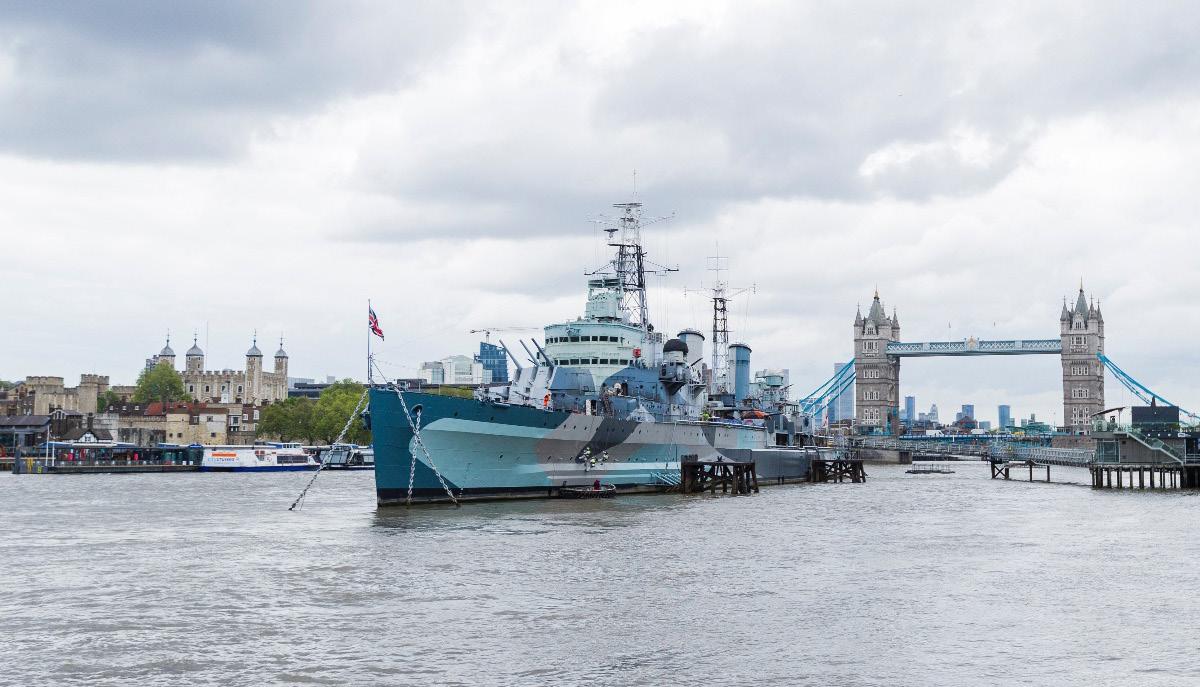
9 minute read
Paints & Coatings
HMS Belfast at her moorings in London
Historic ship coating for Jotun
Advertisement
Jotun UK & Ireland is working alongside UK’s Imperial War Museums (IWM) supporting vital conservation work on HMS Belfast, one of the largest and most powerful cruisers in the Royal Navy during the Second World War, and now a floating museum on the Thames in the heart of London. A sizeable donation of paint from Jotun will ensure that the historic vessel’s structure is soundly protected and cosmetically restored to its original condition for current and future generations to explore and learn about.
HMS Belfast’s construction began in 1936 by Belfast’s Harland & Wolff and was launched on St Patrick’s Day, March 17th 1938. She was commissioned into the Royal Navy on August 5th 1939 less than a month before the start of the Second World War. After a mere two-month service, extensive hull damage from a magnetic mine left her in drydock for three years. Rejoining the fleet in 1942 until April 1944, she worked the Arctic convoys for much of the rest of the war, protecting the key supply route to Russia and playing an important role in the sinking of the German Battleship Scharnhorst. From June 6th – July 8th 1944, HMS Belfast spent five weeks supporting the D-Day landings and is said to have fired one of the first barrages at Gold and Juno beaches on D-Day.
Before being retired from service in 1963, HMS Belfast was also actively involved in the Korean War from 1950-1952 as well as serving in a peace-keeping capacity around the world.
As such a valuable asset in British and Commonwealth history, it was only right that she be saved from the scrap heap and in 1971 was brought to London by the HMS Belfast Trust to become a floating museum. She was transferred to the guardianship of IWM in 1978 where she remains today.
To equip HMS Belfast for her on-going battle against the elements, Jotun has supplied advanced two-pack coatings enabling the restoration to be carried out successfully by brush and roller application. The challenging conditions posed by its location on the River Thames in the centre of London prohibit conventional spray application and ensuring long term performance was imperative.
The specification includes Jotamastic Smartpack, with a simple 1:1 mix ratio and easily applied by brush and roller, and Jotun Hardtop XP on the topsides for the ultimate easy to apply finish.
Jotamastic Smartpack is an epoxy primer designed for typical maintenance of structures where full surface preparation is not possible. Flowing out to provide a smooth base layer when applied by brush or roller for long lasting adhesion and anti-corrosive protection, it was ideal for the areas of HMS Belfast prepared with hand tools.
Hardtop XP is a robust, durable polyurethane topcoat with great colour and gloss retention. It is one of the most popular topcoats with commercial applicators due to its ease of application by spray or brush and roller, with excellent flow and long term in service performance.
Conservation work is permanently on-going, forming part of a ship tour and an open-door attitude to workshops allows the public to see what it takes to keep a war ship in shipshape condition. However, the COVID Lockdown closure has provided an opportunity for some of the heavier maintenance jobs to be tackled, such as the exterior paint work.
Recent contracts for Ecospeed/Ecolast/ Ecoshield
When the pilot boat Spindletop was delivered
recently, its underwater deep V-bottom hull was coated with Ecospeed to protect the vessel against corrosion. The 27.4 m boat was built by Louisiana boat builder Breaux’s Bay Craft.
The Spindletop has individual seating for one operator and 15 pilots or passengers. The pilot boat can reach speeds of up to 30.6 knots and will sail at an estimated running speed of 27 knots during daily operations.
For a fast-going vessel like this it is important to have a coating that will last and will help keep the speed intact. Ecospeed gives an underwater hull the best possible hydrodynamic characteristics. What is more, the performance of the ship does not degrade. Large fuel savings are the result. This brings huge financial benefits over the lifetime of the ship.
Two Robert Allan-designed icebreaking tugs constructed at Turkey’s Sanmar Shipyards have been protected with Ecospeed coating systems. The underwater hulls of Selene and Helios were coated with Ecospeed, the topsides with Ecolast and the azimuth thrusters with Ecoshield.
The pair of 67 tonne bollard-pull ice
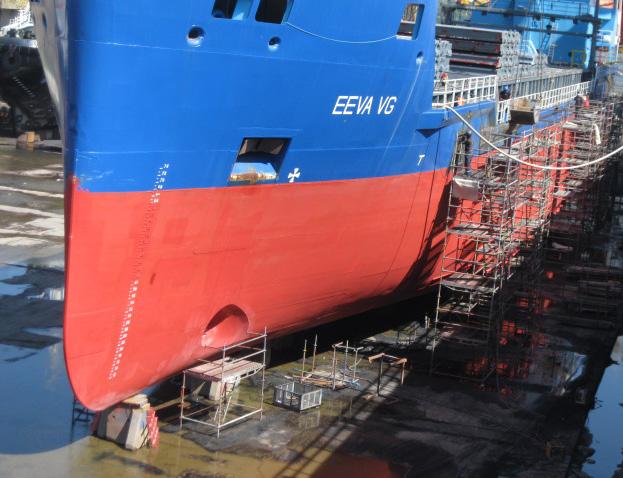
The coating on-board the Eeva VG was in excellent condition earlier this year after coating was originally completed in 2016 (see over)
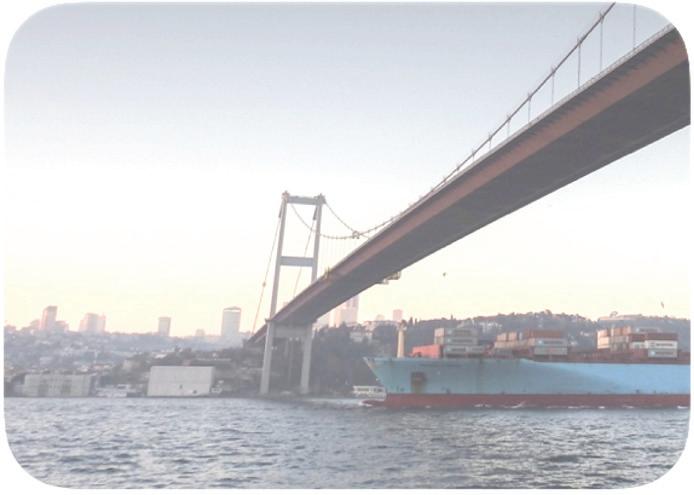
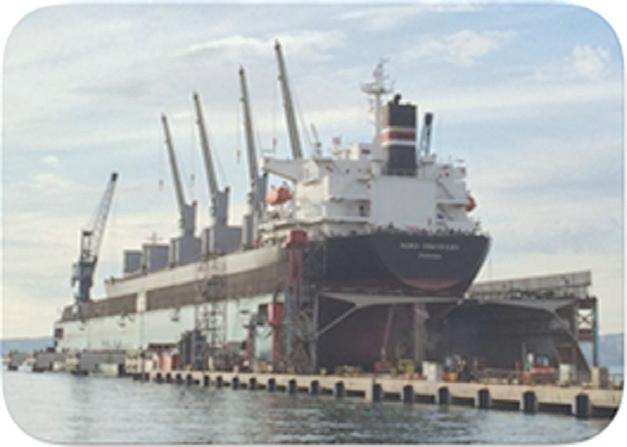
HALF PAGE AD CAMMELL LAIRD
class ASD tugs includes a number of special features to cater for arctic conditions. They are specifically designed for the year-round service in the Baltic Sea and particularly in the Northern part of the Gulf of Bothnia which is covered with heavy ice in wintertime They are capable of performing multiple tasks including escort, ship assist, icebreaking and ice management and open sea towing. The hard-type coatings of Subsea Industries were selected amidst strong competition because of their proven performance in polar waters.
Because the topside of these tugs also needed extra protection against ice, Ecolast was applied to this area of the vessels. This coating is ultraviolet (UV) light resistant and preserves its colour while at the same time offering the corrosion and abrasion protection Subsea Industries coatings are known for. Regular coatings will quickly lose their original colour when exposed to the ultraviolet radiation present in sunlight.
The azimuth thrusters of both vessels were given a lasting protection with the company’s Ecoshield coating. This was done by the OEM prior to delivery. Ecoshield offers permanent protection against cavitation damage for rudders, bulbous bow, stabiliser fins, thruster nozzles and other underwater ship gear which needs special protection from corrosion.
When the 4,700 dwt bulk carrier Eeva VG docked in Turku Repair yard, Naantali, Finland last month, the Ecospeed coating on its hull was still in excellent condition. The ship was coated at the start of 2016. During the most recent docking only very minor touch-ups were needed, despite the severe ice conditions the ship has encountered.
Eeva VG is one of two energy efficient dry cargo carriers built in 2016 and managed by VG-Shipping. Both ships operate in the Baltic region and are designed to cause considerably less environmental impact than conventional dry cargo vessels.
With these vessels operating in arctic waters, the owner requires a coating capable of withstanding ice impact. Polar trading is one of the biggest challenges for coatings manufacturers, since abrasive waters scratch and scrape conventional anti-fouling paints resulting in hull recoats after just one season. Subsea Industries’ hard coatings are developed to last even in the harshest of environments.
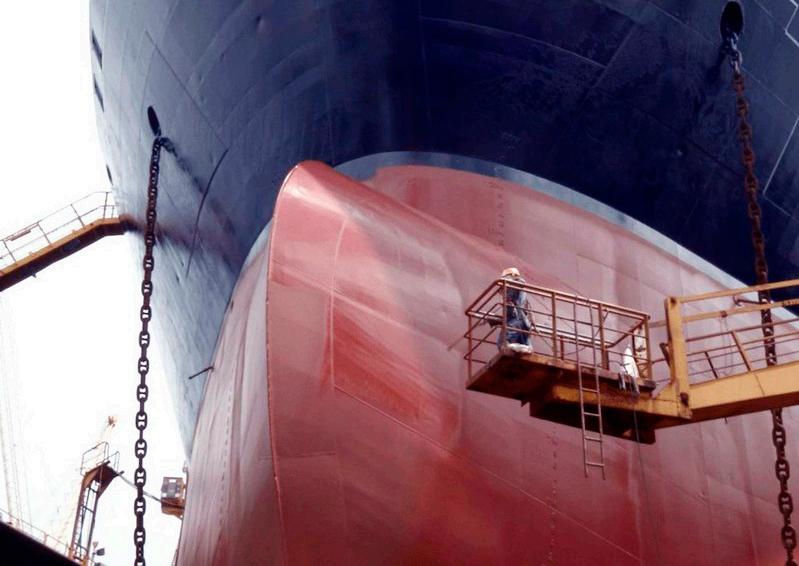
The Calypso being inspected by I-Tech
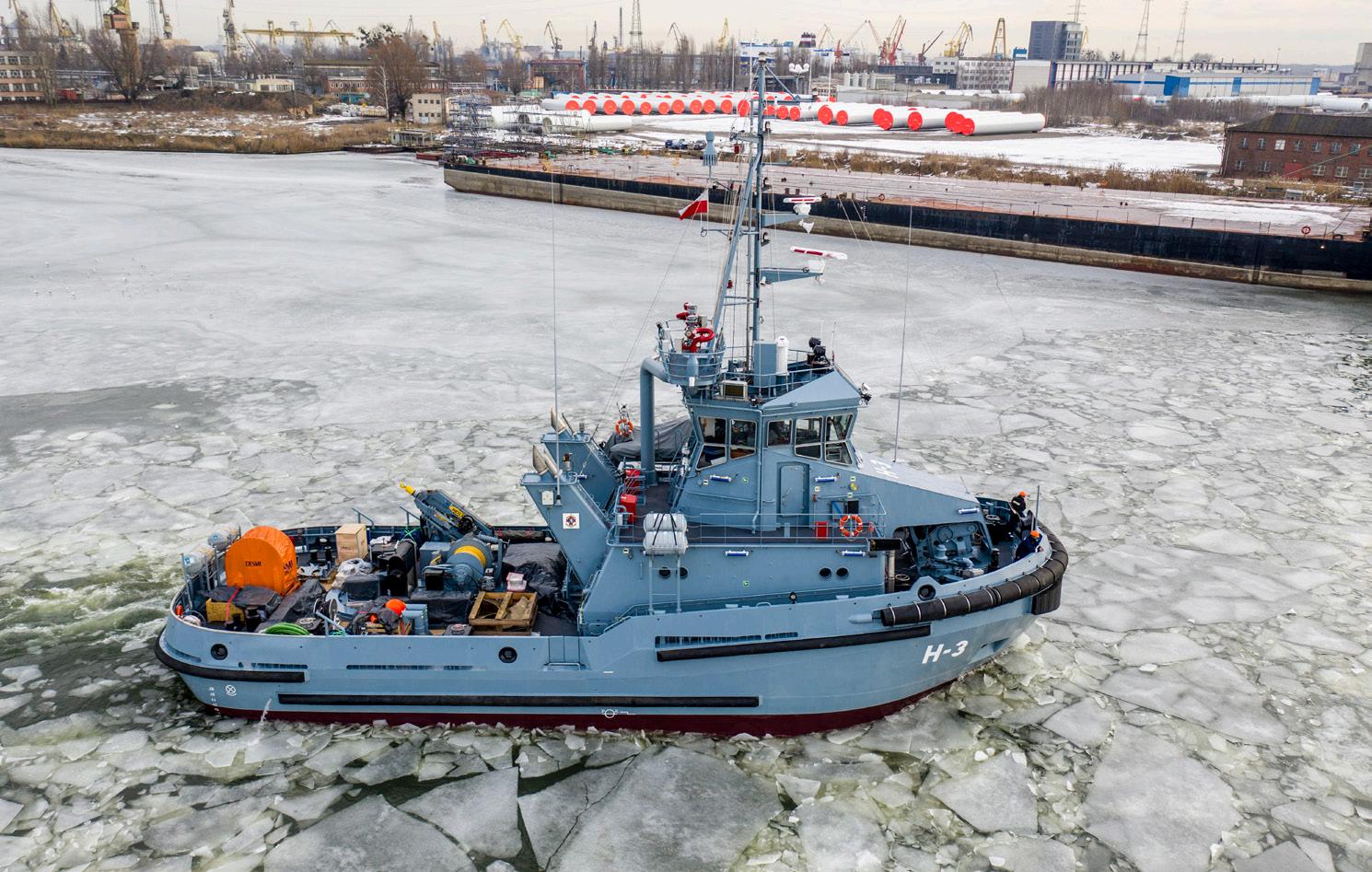
One of the tugs built by Remontowa
Remontowa tug installed with Evac’s MGPS
Evac has supplied marine growth prevention systems (MGPS) to protect Blokland box coolers which have been installed on a series of six tugs for the Polish Navy, built by Remontowa Shipbuilding in Gdansk. The final tug, H -13 Przemko, was undergoing harbour acceptance tests in April following the delivery of the fifth vessel, H-3 Leszko, in February.
The tugs have been built as part of the Polish Navy’s B860 programme and are designed for towing ships as well as activities related to technical evacuation, support of rescue operations and the neutralisation of pollution along the Polish coast. As ice class vessels they will be able to operate in severe ice conditions in conjunction with icebreakers.
Evac has supplied seachest mounted Cathelco MGPS systems which protect box coolers made by Blokland Non Ferro against the formation of marine growth. Commissioning of the latest systems was undertaken by engineers from Marine Centre, Evac’s agent in Gdansk, Poland.
The MGPS system comprises pairs and copper and aluminium anodes which are mounted in the seachests and fed with an electrical current. In operation, the copper anodes produce ions which are carried by the flow of seawater and create an environment where the larvae of barnacles and mussels do not settle or grow. The concentrations of copper are around 2 parts/bn and have no effect on the wider marine environment after discharge.
Evac Group has worked in partnership with Blokland NonFerro, the Dutch manufacturers of box coolers to develop systems which overcome the problem of bio-fouling. This has encompassed the design of integral MGPS systems for box coolers as well as those served by seachest anode installations.
Team Tankers order for I-Tech
Sweden’s I-Tech, has announced that Team Tankers’ tanker Calypso has demonstrated zero barnacle growth after a 63-month operation thanks to its proprietary anti-fouling technology, Selektope.
In November 2015, the vertical sides and bottom of the hull of Calypso, were painted with a five-year Selektopecontaining, copper-free anti-fouling product. The period tested the efficacy of the first 60-month paint system containing the active anti-fouling agent, and saw the vessel operate through heavily impacted fouling areas known as ‘hotspots’ across global routes, formally completing its operations earlier this year.
During this period, Calypso displayed an average weighted speed loss of only -0.5%. Analysis of the tanker’s performance was carried out using Molflow’s AI-ship modelling tool ‘Slipstream’, training multiple Neural Network models to describe the vessel’s behaviour at certain points in time and comparing their predictions for calm atmospheric and oceanic conditions.
This performance compares favourably to industry averages - separate data collected by coating manufacturer Jotun shows an average of 6% annual vessel speed loss, as a result of reduced hull optimisation created by fouling, based on data collected from sensors to enable performance-based monitoring based on standardised principles (ISO 19030).
In addition to sailing in hotspot areas, Calypso spent long periods at anchor where there is increased risk of hard marine fouling by barnacles, whose larvae can only attach to the hull when the vessel is at anchor or moving at slow speeds of up to 6 knots. Regular underwater hull inspections during operation reported almost a complete absence of hard fouling in any of the vertical sides or flat bottom of the hull, and the ship’s hull was not cleaned at any time during the coating’s service life.
The Calypso laid at anchor for one month while waiting for dry dock, exposing the hull to a very high fouling risk. When the ship was taken to dry dock and inspected in February 2021, after 63 months of operation, the hull’s paint showed a normal amount of wear but no growth of barnacles. SORJ










